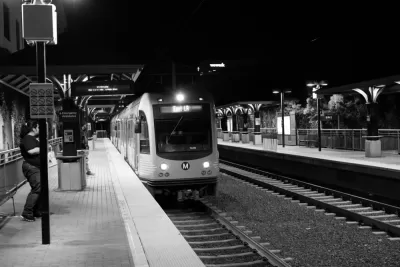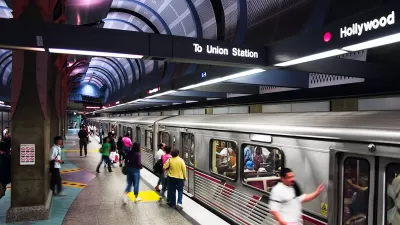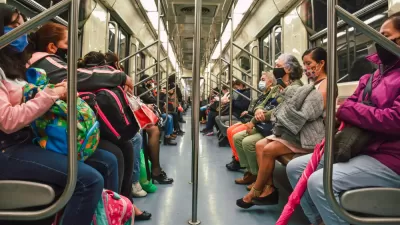In a survey, riders expressed concern about safety, cleanliness, and timeliness on the region’s buses and trains.

Women are using Los Angeles Metro’s buses and trains less than before the pandemic, according to the Los Angeles Metropolitan Transportation Authority (L.A. Metro). Writing for the Los Angeles Times, Grace Toohey explains that the agency says it is close to getting back to regular schedules but still faces an operator shortage, leading to unreliable service and long headways.
In a survey administered by Metro to over 12,000 transit riders, riders cited safety as a top concern, with other concerns including cleanliness and reliability. “Elizabeth Medrano, a bus rider since the 1990s and now a transit organizer with the nonprofit Women Organizing Resources, Knowledge and Services, said it’s hard to pinpoint one reason for decreased female ridership, but noted the pandemic is still affecting many women, who are struggling financially as they are unable to return to the jobs they held before the pandemic.”
Jennifer Vides, Metro’s chief customer experience officer, says the agency is working to address rider complaints. “We are looking at all of it, we are convening teams to talk about the results from the survey and to develop a customer experience plan that addresses these things,” Vides told the L.A. Times. “. Metro officials and community leaders are also hopeful that the new transit ambassador pilot program — which is putting 300 uniformed and trained, yet unarmed, Metro staff on trains and buses — will improve safety by increasing the number of people at transit hubs and providing support to anyone who needs help.”
FULL STORY: Women's ridership is down on L.A. Metro, new survey shows

Alabama: Trump Terminates Settlements for Black Communities Harmed By Raw Sewage
Trump deemed the landmark civil rights agreement “illegal DEI and environmental justice policy.”

Planetizen Federal Action Tracker
A weekly monitor of how Trump’s orders and actions are impacting planners and planning in America.

The 120 Year Old Tiny Home Villages That Sheltered San Francisco’s Earthquake Refugees
More than a century ago, San Francisco mobilized to house thousands of residents displaced by the 1906 earthquake. Could their strategy offer a model for the present?

In Both Crashes and Crime, Public Transportation is Far Safer than Driving
Contrary to popular assumptions, public transportation has far lower crash and crime rates than automobile travel. For safer communities, improve and encourage transit travel.

Report: Zoning Reforms Should Complement Nashville’s Ambitious Transit Plan
Without reform, restrictive zoning codes will limit the impact of the city’s planned transit expansion and could exclude some of the residents who depend on transit the most.

Judge Orders Release of Frozen IRA, IIJA Funding
The decision is a victory for environmental groups who charged that freezing funds for critical infrastructure and disaster response programs caused “real and irreparable harm” to communities.
Urban Design for Planners 1: Software Tools
This six-course series explores essential urban design concepts using open source software and equips planners with the tools they need to participate fully in the urban design process.
Planning for Universal Design
Learn the tools for implementing Universal Design in planning regulations.
Clanton & Associates, Inc.
Jessamine County Fiscal Court
Institute for Housing and Urban Development Studies (IHS)
City of Grandview
Harvard GSD Executive Education
Toledo-Lucas County Plan Commissions
Salt Lake City
NYU Wagner Graduate School of Public Service





























